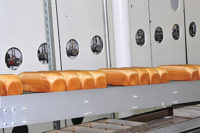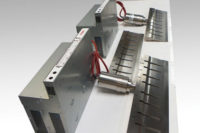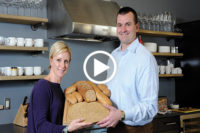According to historical records complied by AIB librarian Ron Wirtz, the deep economic depression, followed by the war brought “a great many shortages of all types, and resulted in the severe deterioration of many food producing establishments, including numerous baking plants. As a result, a new version of the Federal Food, Drug and Cosmetics Act was enacted, which mandated higher standards of sanitation in food processing and handling establishments and set penalties for violations of these standards. In response, mainly due to the efforts of Louis Caster, the institute also established a new Department of Bakery Sanitation in December, 1945.
Food safety first
There was a great need for the dissemination of information on the importance of bakery sanitation, and AIB’s first activities in this area involved the publication of informational and training bulletins and attendance and presentations at local, state, and national bakers’ meetings, according to AIB’s historical data. “The result of this initial thrust was a series of 17 bulletins on aspects of bakery sanitation, published from 1945 through 1950, and widely distributed throughout the food industry.”
The microwave oven has only been around since the late 1940s. According to www.scribd.com, in 1945, Percy Spencer experimented with a new vacuum tube called a magnetron while doing research for the Raytheon Corp. He was intrigued when the candy bar in his pocket began to melt, so he tried another experiment with popcorn. When it began to pop, Spencer immediately saw the potential in this revolutionary process.
Bunny Bread from Lewis Bakeries was born in 1947 and was trademarked in 1951. Like many other bakeries including Gonnella, Lewis began making several acquisitions during the postwar years. Lewis also expanded into the production of sweet goods and constructed new bakeries across the Midwest and parts of the South.
In 1947, Raytheon built the first microwave oven, the Radarange, which weighed 750 lb., was more than 5 ft. tall, and cost about $5,000. When the Radarange first became available for home use in the early 1950s, its bulky size and expensive price tag made it unpopular with consumers. But in 1967, a much more popular 100-volt, counter-top version was introduced at a price of $495.
Still more sanitation standards for the industry were implemented. In 1948, BEMA created a technical committee to study federal, state and municipal sanitation standards for baking machinery. The committee established the first sanitation codes for BEMA members and in the following year, along with allied organizations, helped form the Baking Industry Sanitation Standards Committee (BISSC), with the purpose to develop and promote sanitation standards for bakery equipment. Presently, BEMA says it is funding an effort to secure American National Standards Institute (ANSI) accreditation for BISSC sanitation standards.

















